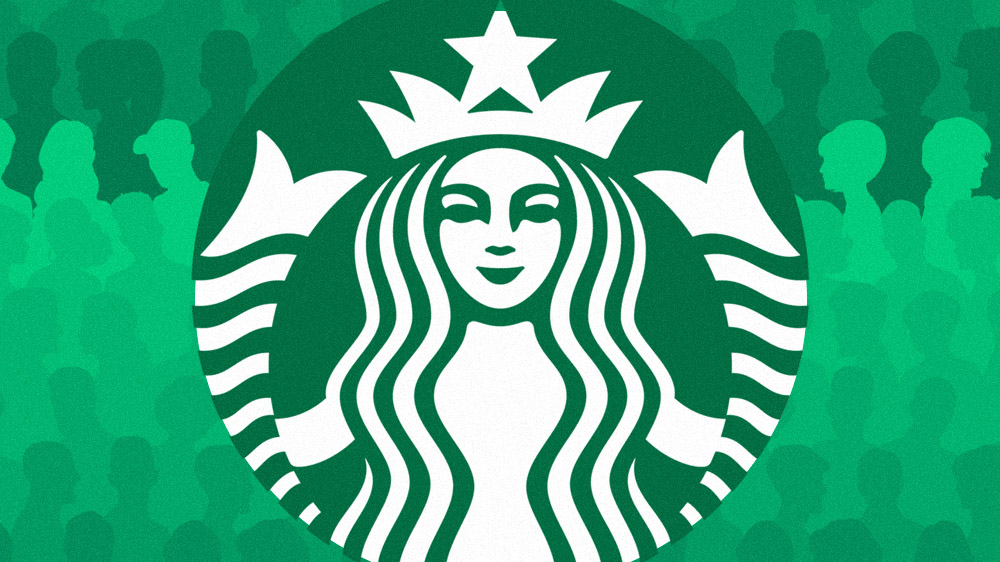
Starbucks is looking to seize the audiences it captivated with its storytelling efforts during the first season of Upstanders, an original series that documents altruistic citizens making differences in their communities, by expanding its content ecosystem and partners with new distribution channels in Amazon Prime Video, Facebook Watch and Audible.
Upstanders is a collection of short stories free of Starbucks product placement and is produced in written, video and audio formats, telling the stories of ordinary people who demonstrate courage through their actions. It is not intended to be political.
When asked if the quest for caffeine, content and uniting American communities is an extension of Starbucks’ cause marketing efforts—Upstanders sleeves have previously complemented cups—Rajiv Chandrasekaran, Starbucks’ senior vice president of public affairs, said he sees their work more as storytelling in the public interest, hoping that the series spreads a message and provokes a viewer’s attention toward humanitarianism.
“I don’t see this as marketing or cause advocacy,” said Chandrasekaran. “We’re not out trying to use Upstanders to sell more coffee, drive traffic into our stores or promote the brand. It’s really a pro-bono initiative that’s aimed at inspiring and engaging people. There’s no hidden agenda here that says, ‘we’re trying to do this to drive a marketing agenda.’
“If you can [create content] in a thoughtful and authentic way that’s not a clever way to promote oneself, [and] if you can tell great stories, the audience will follow.”
Balancing social-conscious storytelling with the bottom line by addressing issues at large within the communities Starbucks serves is a strong statement for a coffee company that casts a global net among consumers. Being a brand that doubles as a non-media publisher, Starbucks is seeking to create a cup of counter-programming to combat the influx of negative news hitting TV and social media every day, reminding viewers that there’s more to the country than what’s currently wrong with it. Although the series is not specifically tied to its marketing funnels, Starbucks is still getting a seat at the table with newfound opportunities (and exposure) that come with such projects, and it fits within the big picture of the company.
“We’ve seen brands generate material about their own products for years now. There’s an appeal to that among consumers,” said Chandrasekaran. “What we’re starting to see is that when you train the lens not just on yourself, the product, people and experience, but on the country, people are interested.”
Chandrasekaran, formerly a senior editor for The Washington Post who co-authored the book For Love of Country: What Our Veterans Can Teach Us About Citizenship, Heroism and Sacrifice with Starbucks executive chairman Howard Schultz, travels the country with Schultz to identify story subjects, spends time filming the change-makers and then jointly writes and produces the pieces. Stories from the 11-episode series include a woman who forgives her assailant and fights for his freedom after being shot in the face.
The Upstanders Stories
Knives, Fire and Opportunity | The Wave to Recovery | From War to Montana | Befriending Her Shooter | Planting Hope in a Coalfield | A Racist’s Rehabilitation | One Doctor’s Needle Fix | Love for All in Utah | Saving Middletown | The Firefighters’ Rescuer | The Disappearing Island
Upstanders was promoted in every Starbucks store in the US this year with table tents. In addition to distributing Upstanders through the Starbucks site, mobile app, in-store WiFi network and social media, the team created an exclusive full-length documentary for Amazon and became one of the first non-media brands to have content appear on Facebook’s recently launched Watch platform.
“Marketing for us is different than many other similarly sized and situated brands. Comparatively speaking, we don’t do as much advertising on television or in print,” Chandrasekaran explained. “The best marketing in my view is the experience in stores, the human connection with Starbucks baristas and the quality of the food or beverage in one’s hand.
“What we’re demonstrating is that a non-media company can create compelling content that’s widely watched on third-party platforms, but it’s still the early days for us. That’s a unique thing—there aren’t many people out there doing that. For us, this is still a learning endeavor.”
Top brass at Starbucks was surprised (and satisfied) with how well season one performed; videos were collectively viewed more than 80 million times.

To amplify their message even further, the coffee chain experimented with their content mix by tapping actor Michael B. Jordan to narrate Upstanders as an audiobook, which is available as a free download on Audible. The audiobook is new for the second season, but Starbucks went back to produce a separate installment for season one.
Starbucks also experimented with user-generated content and tapped into its fervent consumer base by providing grants for deserving groups through the “Upstanders Challenge.” After receiving upward of a thousand video submissions, the Starbucks Foundation awarded more than half-a-million dollars in grants to non-profits making a difference in their communities.
“For the last couple of years, we’ve been asking: what is the role and responsibility of a public company?” Schultz said last year. “For any consumer brand, especially a brick-and-mortar retailer like Starbucks, [it’s] the rules of engagement, because of Amazon and mobile commerce are really changing . . . We’re never going to become a media company. But we can extend the brand and the experience through media and original content.”
Chandrasekaran, Schultz and the rest of the Upstanders content development team are already planning for more storytelling projects in the coming year and will apply insights from the first two seasons to be more thoughtful and adept storytellers.
“There certainly are learnings that will apply to more traditional branded content that the company is going to create,” Chandrasekaran said. “It’s only going to reinforce our commitment to creating content in the public interest.
“There’s a lot of dysfunction, anger and fighting out there. American people are yearning for greater unity, for positivity [and] to reclaim the great values that the country was founded upon.”

